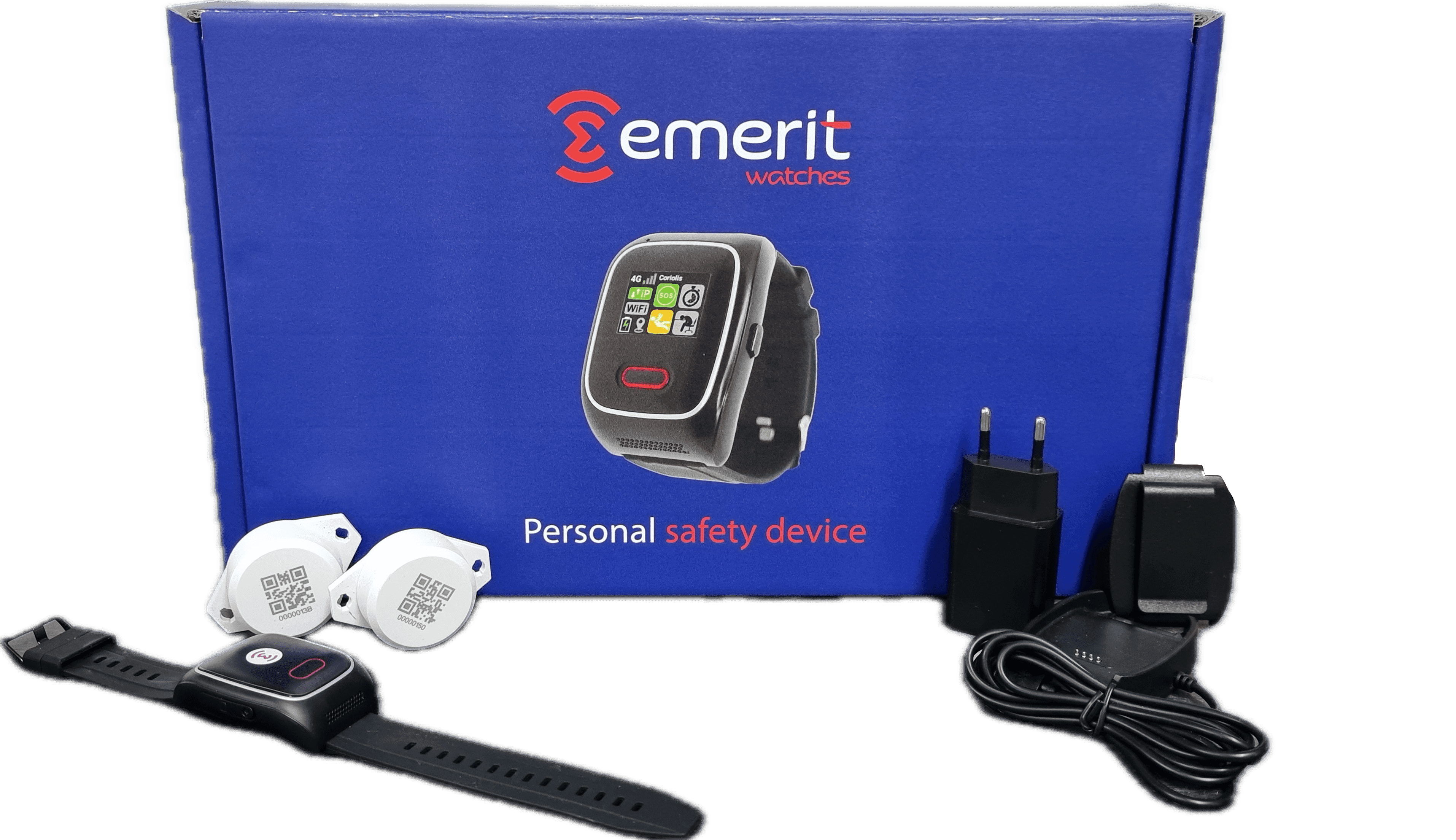Introduction
Importance of Protecting Lone Workers
Working alone, especially in hazardous environments, can be a serious concern for employees and employers alike. Ensuring the safety and well-being of lone workers is essential to avoid accidents, injuries, and other risks.
Preview of the Main Topic: Protection Technologies for Lone Workers
The good news is that technology has advanced to the point where it is now possible to protect lone workers using various tools and systems. In this article, we will explore some of the most innovative and effective protection technologies available for lone workers.
Lone Workers Location Systems
Definition and Functioning of Lone Worker Location Systems
Lone worker location systems are technological tools that allow employers to receive the location associated with a lone worker’s alarm. These systems typically use GPS, Wi-Fi, Radio, Bluetooth or cellular signals to determine the exact location of a worker.
Practical Examples of Using Lone Worker Location Systems
Lone Worker Location Systems can be used in a variety of administrations, stores, industries, including construction sites, hotels, schools, laboratories. For example, in a construction site, employers can use these systems to monitor workers who are working at height or in hazardous areas. In the mining industry, these systems can be used to monitor workers who are underground.
Advantages of Using These Systems for Lone Workers and Employers
Lone Worker Location Systems provide several benefits for both workers and employers. For workers, these systems offer an added layer of safety and security, giving them peace of mind knowing that their location is being monitored. For employers, these systems help to ensure the safety of their employees, reduce the risk of accidents and injuries. Additionally, these systems can also help employers to comply with health and safety regulations, which is especially important in industries where the risks to workers are high.
Lone Workers alarm devices
Presentation of Lone Workers alarm devices
Distress Alarms for Lone Workers are devices designed to provide workers with a quick and easy way to call for help in the event of an emergency. These alarms are typically small, portable, and easy to use.
How Lone Workers alarm devices work
Distress Alarms for Lone Workers work by allowing the user to trigger an alarm with the press of a button. An alarm can also be triggered automatically by detecting immobility or prolonged tilt. This sends an emergency signal to a designated recipient, such as a supervisor or a security company. The recipient can then respond quickly to the situation, providing the worker with the help they need.
Alarms can be transmitted via different networks:
– GSM: 2G, 3G, 4G, 5G
– WIFI: 2.4GHz or 5GHz
– Radio
Advantages of Using Man down Alarms for Lone Workers
The use of Lone Workers alarm systems offers several benefits. Firstly, they provide workers with an added layer of safety and security, giving them peace of mind knowing that they can call for help if needed. Secondly, these alarms are quick and easy to use, making them accessible for workers in any emergency situation. Finally, Lone Workers alarm devices can also help to reduce the response time for emergency services, which can make a significant difference in life-threatening situations.
Using Mobile Phones or Apps for Lone Worker Safety
Explanation of the Function of Mobile Phones for Lone Worker Safety
Mobile Phones can play a crucial role in the protection of Lone Workers. They can be used for emergency communication, GPS tracking, and can also be equipped with safety features such as panic buttons and alarm triggers.
How Mobile Phones Can Help Protect Lone Workers
Mobile Phones can help protect Lone Workers by allowing them to quickly and easily contact someone in the event of an emergency. With
GPS tracking, employers can monitor the location of their workers, ensuring they are safe and in the right place. Safety features such as panic buttons and alarm triggers can also be activated, allowing the worker to quickly signal for help.
Advantages of Using Smartphones for Lone Worker Safety
The use of Mobile Phones for Lone Worker Safety offers several advantages. Firstly, they are easy to carry and can be used in any location. Secondly, mobile phones are accessible at all times, making them an essential tool for workers who may be working in isolated or remote locations. Finally, the use of mobile phones for Lone Worker Safety also helps to increase transparency and accountability, as employers can monitor the whereabouts and safety of their workers.
Limitations of mobile phones and apps for smartphones as Lone Worker Protection Devices
While smartphones can provide an effective and practical solution for Lone Worker protection, there are also some limitations to consider. One of the main limitations is that smartphones are vulnerable to network coverage issues and battery life, which can prevent workers from receiving or making an emergency call. Additionally, smartphones may be lost or damaged, rendering them useless for Lone Worker protection. Another limitation is that not all Lone Workers may be comfortable carrying a smartphone or may not have access to a smartphone due to their working conditions.
Employers must weigh these limitations carefully when considering using smartphones as a Lone Worker protection solution.
Another limitation of using smartphones for Lone Worker protection is that they may not be equipped with specific safety features, such as GPS tracking or panic buttons. In such cases, workers may need to rely on third-party apps, which may have security and privacy risks. Moreover, smartphone apps may not be compatible with all devices, or may not have the necessary features to meet specific safety requirements. These limitations can affect the effectiveness and reliability of using smartphones as a Lone Worker protection solution. Therefore, it is essential for employers to carefully assess the capabilities of their workers’ smartphones and ensure that they are equipped with appropriate safety features.
Advantages of Alarm Bracelets for Lone Workers
Presentation of Alarm Bracelets for Lone Workers
Alert Bracelets are wearable devices designed to provide extra protection for Lone Workers. These bracelets are equipped with various safety features, including GPS tracking and emergency alarms.
How Alert Bracelets Work for Lone Workers
Alarms Bracelets work by providing Lone Workers with a discreet and effective way to signal for help in an emergency. If the worker feels in danger, they can activate the alarm on the bracelet which will then send a distress signal to a designated contact or monitoring center. The GPS tracking feature allows the worker’s location to be determined, ensuring a prompt response.
Advantages of Using Alert Bracelets for Lone Workers
There are several advantages to using Alarms Bracelets for Lone Workers. Firstly, they are small and lightweight, making them easy to wear and carry. Secondly, they are discreet and non-intrusive, allowing workers to carry out their tasks without distraction. Finally, alert bracelets provide a quick and effective way to signal for help, increasing the safety of Lone Workers and providing peace of mind to both workers and their employers.
Conclusion
Recap of the different Protection Technologies for Lone Workers
In this article, we have discussed the various protection technologies for Lone Workers, including Lone Worker Location Systems, Distress Alarms, Mobile Phones, and Alarm Bracelets. These technologies offer practical and effective ways to ensure the safety and security of Lone Workers.
Final Message for Implementing These Technologies to Protect Lone Workers
In conclusion, the implementation of protection technologies for Lone Workers is essential in today’s working environment. These technologies provide a cost-effective and practical solution to ensuring the safety of Lone Workers, while providing peace of mind to both workers and their employers. It is important for employers to carefully consider the various options available and choose the technology that best meets the needs of their Lone Workers. By doing so, they can help ensure the safety and security of their employees, reducing the risk of accidents and incidents in the workplace.







